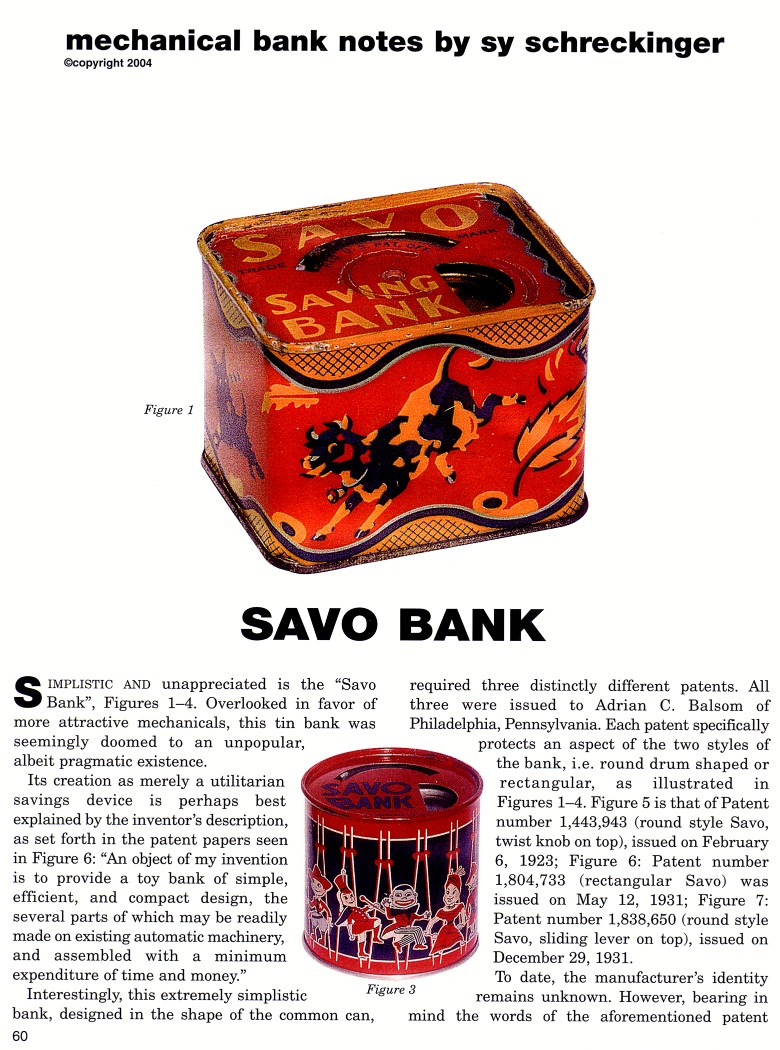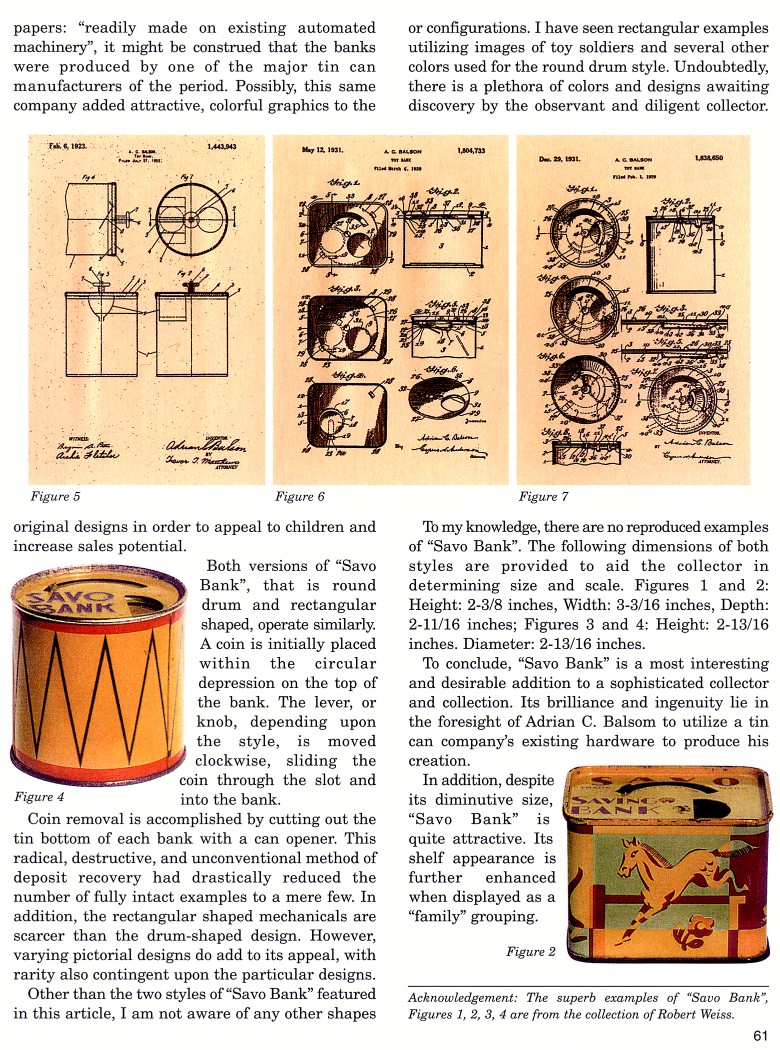|
Savo Bank
by Sy Schreckinger – ANTIQUE TOY WORLD Magazine – May, 2004
Simplistic and unappreciated is the "Savo Bank", Figures 1
- 4.
Overlooked in favor of more attractive mechanicals, this tin bank was
seemingly doomed to an unpopular, albeit pragmatic existence.
Its creation as merely a utilitarian savings device is perhaps best
explained by the inventor's description, as set forth in the patent papers
seen in Figure 6: "An object of my invention is to provide a toy bank of
simple, efficient, and compact design, the several parts of which may be
readily made on existing automatic machinery, and assembled with a minimum
expenditure of time and money."
Interestingly, this extremely simplistic bank, designed in the shape
of the common can required three distinctly different patents. All three
were issued to Adrian C. Balsom of Philadelphia, Pennsylvania. Each patent
specifically protects an aspect of the two styles of the bank, i.e. round
drum shaped or rectangular, as illustrated in Figures 1-4. Figure 5 is
that of Patent number
1,443,943 (round style Savo, twist knob on top),
issued on February 6, 1923; Figure 6: Patent number
1,804,733 (rectangular Savo) was issued on May 12, 1931; Figure 7: Patent number
1,838,650 (round
style Savo, sliding lever on top), issued on December 29, 1931.
To date, the manufacturer's identity remains unknown. However,
bearing in the mind the words of the aforementioned patent papers:
"readily made on existing automated machinery", it might be construed that
the banks were produced by one of the major tin can manufacturers of the
period. Possibly, this same company added attractive, colorful graphics to
the original designs in order to appeal to children and increase sales
potential.
Both versions of "Savo Bank", that is round drum and rectangular
shaped, operate similarly. A coin is initially placed within the circular
depression on the top of the bank. The lever, or knob, depending upon the
style, is moved clockwise, sliding the coin through the slot and into the
bank.
Coin removal is accomplished by cutting out the tin bottom of each
bank with a can opener. This radical, destructive, and unconventional
method of deposit recovery had drastically reduced the number of fully
intact examples to a mere few. In addition, the rectangular shaped
mechanicals are scarcer than the drum-shaped design. However, varying
pictorial designs do add to its appeal, with rarity also contingent upon
the particular designs.
Other than the two styles of "Savo Bank" featured in this article, I
am not aware of any other shapes or configurations. I have seen
rectangular examples utilizing images of toy soldiers and several other
colors used for the round drum style. Undoubtedly, there is a plethora of
colors and designs awaiting discovery by the observant and diligent
collector.
To my knowledge, there are no reproduced examples of "Savo Bank". The
following dimensions of both styles are provided to aid the collector in
determining size and scale. Figures 1 and 2: Height: 2-3/8 inches, Width:
3-3/16 inches, Depth: 2-11/16 inches; Figures 3 and 4: Height: 2-13/16
inches. Diameter: 2-13/16 inches.
To conclude, "Savo Bank" is a most interesting and desirable addition
to a sophisticated collector and collection. Its brilliance and ingenuity
lie in the foresight of Adrian C. Balsom to utilize a tin can company's
existing hardware to produce his creation.
In addition, despite its diminutive size, "Savo Bank" is quite
attractive. Its shelf appearance is further enhanced when displayed as a
"family" grouping.
Acknowledgement: The superb examples of "Savo Bank", Figures 1, 2, 3,
4 are from the collection of Robert Weiss.
|

